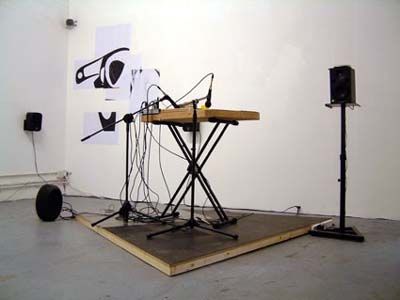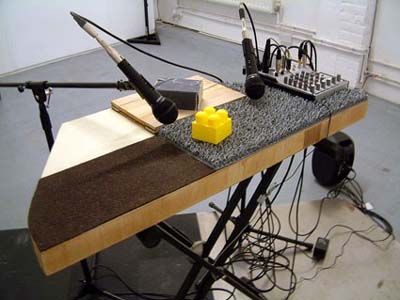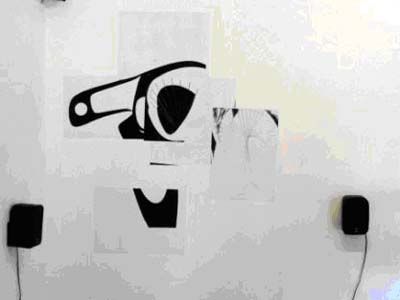
HTTP Gallery London
“De-Grammatical: Language and Rhythm Transformation” Elisabeth Penker 2005


HTTP Gallery London

Elisabeth Penker “Auto-no-mous-Icon, twins?” 2005 (edition of 10)
Black and white photo copies are wheat-pasted onto the wall of the gallery in a non-linear way, much like an announcement boards for advertisement or political slogan. In “Auto-no-mous-Icon?” there are two different groupings of collaged images. One set of collages are ‘constructivist-style’ sculptural objects by Penker which are painted in black and white colours to accentuate the hard angles and diagonal cuts of the objects, but collaged and grouped together to break the Western perspective model of architectural space. The other group are collaged elements of Haida Gwai (First Nation) graphic emphasizing the forms common to modernism

“Auto-no-mous-Icon (Legwarmer)” 2005
Much like the wall piece by adding photocopies onto the surface of the pedestal it disrupts the geometric shape. By wrapping fabric around the base of the pedestal entitled “Legwarmer” she emphasizes the figurative function of the pedestal for displaying sculptural portraits, where the pedestal is the metaphor for the body

Elisabeth Penker, “Untitled (Moscow, cracky walls 1999)”, 2004
Penker transforms the rhythm of motors and language fragments in her sound piece “Untitled (Moscow 1999)”. Channel one and two are sound files of deconstructed rhythms. Channel three contains de-grammaticised language where almost no rhythm and therefore no familiar language fragments remain. The three mono-channels are mixed to the output of two active speakers. The equipment and cables are set up on a fabric piece made out of burlap and leather. This fabric shape maps the speaker placement, by positioning the speakers on the edge of the shape facing away from each other. The speaker placement becomes acoustic site-specific. The closer you are to the piece the more you hear the distinction between the channels and as further away the more you hear the entire mix